The standard range of the bassoon extends down to the Bb below bass clef, some pieces ask players to play an A below that. This is an on going subject that I don’t think I can fully cover here, but I can talk about my experiences so far!
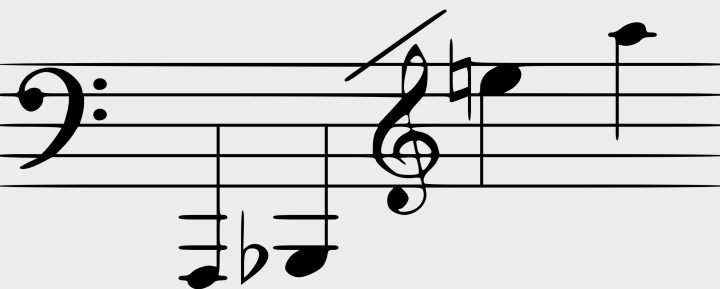
The range of the bassoon listed on wikipedia indicates that Low A is an extended technique and possible with an extension. There are a few ways that the bassoon can play that Low A.
Multiphonic Fingerings exist that create loud/active sounds and colors on bassoon. There is a fingering that creates a sound similar to the Low A. The fingering is xxo/xxx F and there are others which can sort of sound like lower notes as well. To me this is not really a solution since the color of this multiphonic is so loud and rough it isn’t something that would just blend with the orchestra’s sound. I mention these fingerings to composers when I commission new music, but thats about it.
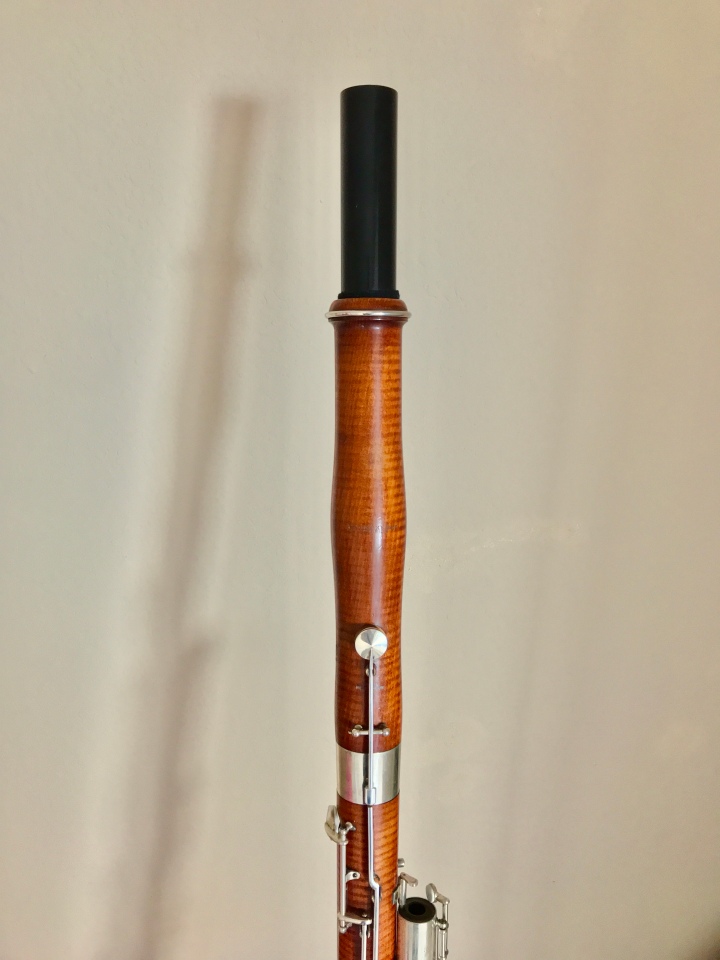
Low A Extensions are usually the way to get to that note, and we have options from cheap to expensive. Cardboard paper towel roll fits in the bassoon bell so that can be cut to length to be an in tune low A. There are commercial versions of this made from plastic (looks better) which comes with a felt ring to adjust how far it extends, which gets that same effect. I have heard in some specific cases like the Nielsen woodwind quintet that a bassoonist uses the English Horn’s bell, which sounds like a complete invasion of personal space. There are nicer custom made maple extensions out there too, which look the best.
Adding a Low A extension to the bassoon creates issues. To use the extension to play an A mean that we finger the low Bb and the A comes out, which means that we can no longer play Bb. The extension also interferes with the taper of the bore. The bore of the bassoon is never stagnant, its always expanding or diminishing and so to put in a straight tube changes the final taper of the instrument’s length. That creates a whole series of acoustical issues that affects the projection and intonation across all of the bassoon’s range not just the low notes. Since it’s such an acoustic issue to have the extension in, we just put it in for the exact passage it’s needed and then take it out. So all of that being said using an extension for Low A is very tricky and used on a case by case basis. Sometimes players will bring the note or whole passage up an octave, some players are die hard purists that the low A must be played, some players don’t own an extension and never bother with it. It’s awkward to put in and out quickly and it makes the bassoon sound wonky when it’s in.
Magical Chromatic Low A Extension should be a massed produced item by now! This extension made by Benson Bell in the 1980’s, he made a set of 4 that were exactly matched to the bassoons owned by the players of the Toronto Symphony. When Steven Braunstein left and went to San Francisco the extension went with him because it was custom sized and fitted to just his bassoon. Now the placement of this extension is different, this doesn’t go onto the end of the bassoon bell but it goes between the long joint and bell.
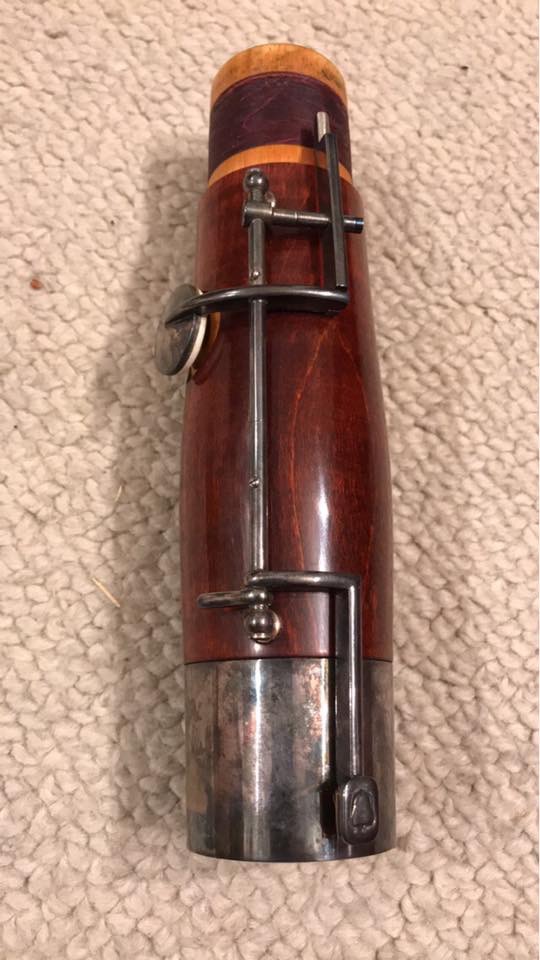
This extension is unique in that it doesn’t require any addition keywork added to the bassoon. Also unique in that it is fully chromatic, and so we can play Low A and the Bb. The operation is easy, push the Bb key halfway down for Bb and all the way down for A. This exact style of extension would not work for a gentlemen cut bassoon but a mechanism could probably be designed for that.

It is a big step up from the inserted extension but it still creates intonation and projection issues throughout the range. It is still interrupting the bore and the way the instrument was voiced. However this makes many more Low A circumstances possible. Such as this passage from the Tomasi Trombone Concerto

This would be normally unplayable since having a basic tube extension in means the Bb would sound as an A, and I can’t put in and take out the extension for just one note while playing. This is an example where the player either plays it all up an octave or doesn’t play the A.
Low A Bells are the most expensive option and someone has to think about how often they play Low A, and is it worth the price.
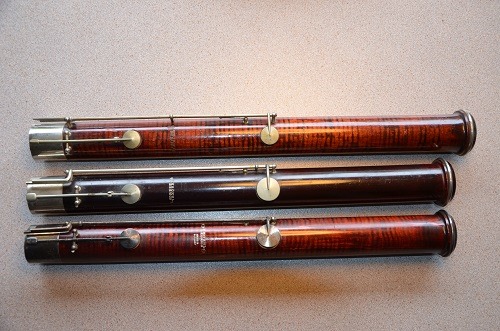
Having a Low A bell built is typically done when initially ordering a new instrument.
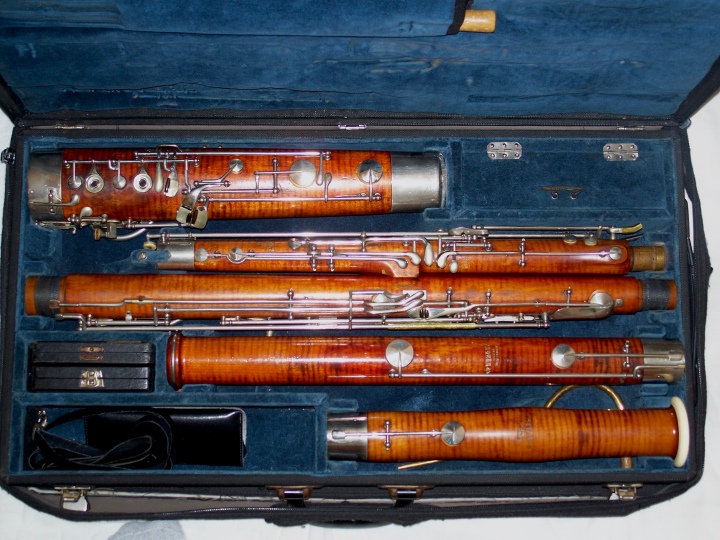
The Low A on these bells is operated with keywork that is permanently attached to the bassoon. This is either a touch piece on the right side of the low Bb key or as a larger key below the low C# key. Having it below the C# key would interfere with the pinky whisper key. The Low A bells still suffer from the acoustic deficiencies of tweaking with the bore. To really have a low A instrument built it would require a re-designed long joint and bell.
I don’t know why bassoon bottoms out at Bb. It historically always has, but with most orchestral works being in sharp key signatures, it seems like A would be more useful. The need to play A’s began with Wagner, Strauss, and Mahler and now still comes up in new pieces. It would be great if a bassoon manufacturer would mass produce some chromatic extensions!
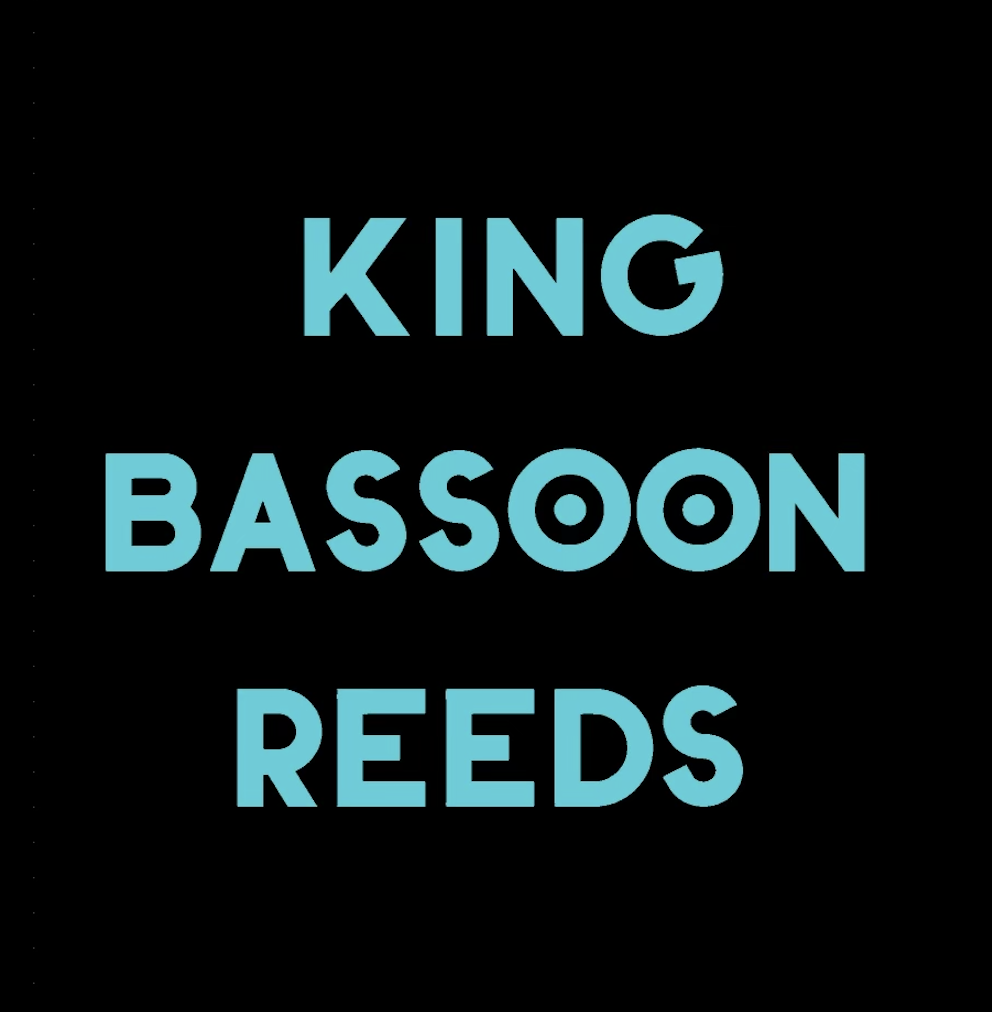
Chris, you could include the W Waterhouse discussion on p 108 about using embouchure on Bb to produce A and as an aside his comment on Popov’s use on bottom C to get a quiet B . Best wishes
Hey Kris, what a fascinating post! Looking at the different options you’ve listed above, I wonder if there’s a possibility of building a middle ground between Benson Bell’s Magical Chromatic Low A Extension & a true Low A bell by creating a single-piece Low A bell but install the combined keywork of the Magical Low A Extension & the conventional bassoon bell keywork on it rather than the conventional Low A bell keywork, so the bore won’t be interrupted as much(if any) while saving the money & complexity of a standalone keywork for the Low A, not to mention the player can simply switch back to the stock Low Bb bell when a Low A isn’t required?
Yes that would be a good solution, However the cost of an additional bell from the more sought after bassoon manufacturers with this additional keywork and length would probably be around 10k. However I could see people purchasing already existing Heckel low A bells and converting them to this key system. Or someone with maple stock and key fabrication mass producing this style of A extension.
Hey Kris, thanks for the reply. Coming from a primarily single reed player(where aftermarket bells for clarinets are commonplace) I was referring more to your latter scenario i.e. a hypothetical aftermarket Low A ‘Wagner bell’ which has the proper bore flare for both Low Bb & A combined with the much simpler standard bell+Magic Extension keywork by Ben Bell(though Ben can also offer this contraption himself). I think the mass production or well-priced hand-crafting of such a ‘Modern Wagner Bell’ will be a big hit once made available!
How about a Low G bell, BWV 31 has a Low G in the Bassoon part cause it was written for a Rare Low G Bassoon.
What about a Low G like in some of Bach’s Works? It would give you more notes to play